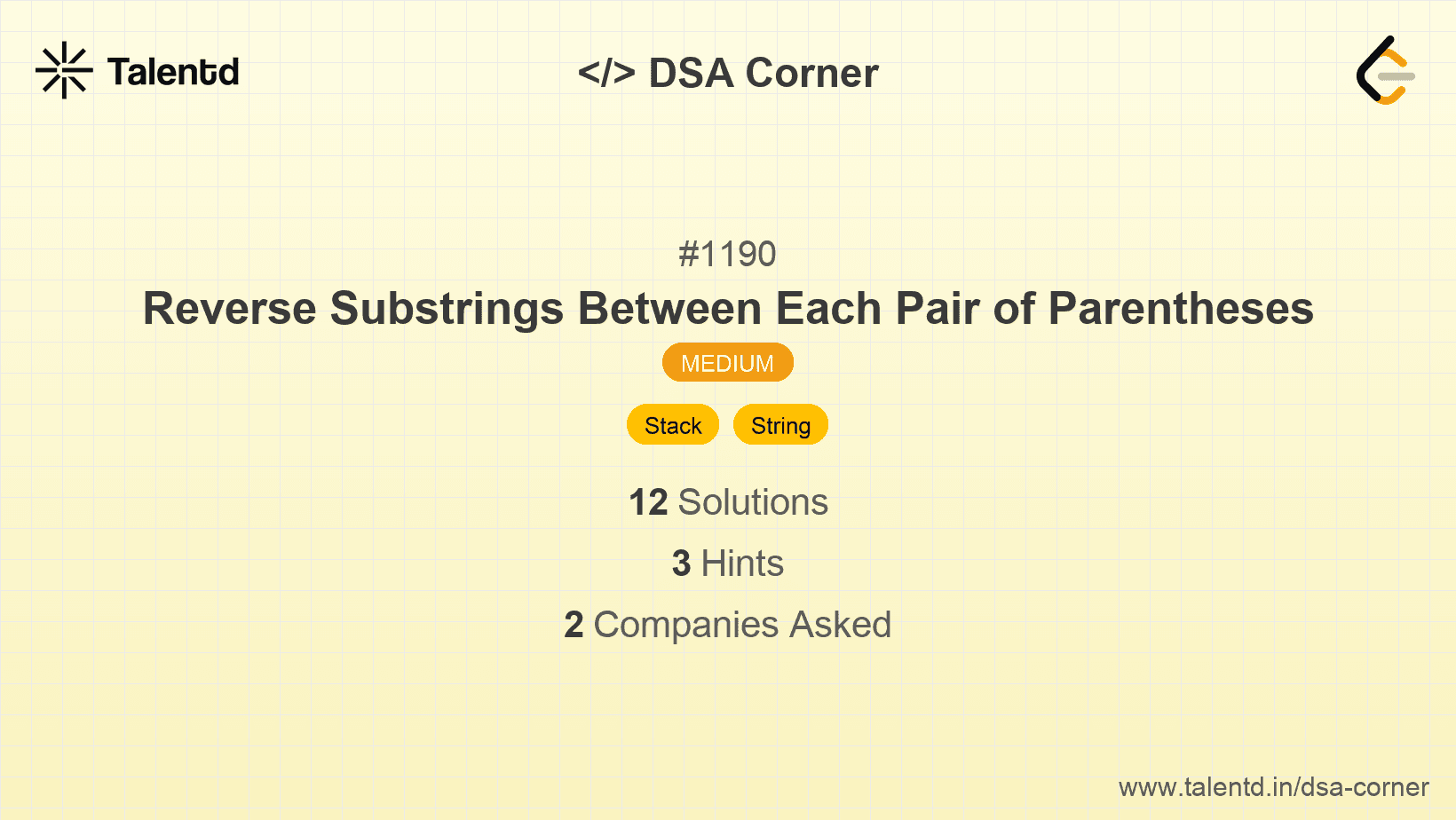
Sponsored
Sponsored
Utilize a stack to handle the nested or paired parentheses efficiently. By pushing characters onto a stack until a closing parenthesis is encountered, then reversing the needed substring, you can leverage the stack's LIFO properties to achieve the desired result.
Time Complexity: O(n).
Space Complexity: O(n) due to the stack usage for storing characters.
1import java.util.Stack;
2
3public class ReverseParentheses {
4 public String reverseParentheses(String s) {
5 Stack<Character> stack = new Stack<>();
6 for (char c : s.toCharArray()) {
7 if (c != ')') stack.push(c);
8 else {
9 StringBuilder sb = new StringBuilder();
10 while (stack.peek() != '(') {
11 sb.append(stack.pop());
12 }
13 stack.pop(); // pop '('
14 for (char rc : sb.toString().toCharArray()) stack.push(rc);
15 }
16 }
17 StringBuilder result = new StringBuilder();
18 while (!stack.isEmpty()) result.append(stack.pop());
19 return result.reverse().toString();
20 }
21
22 public static void main(String[] args) {
23 ReverseParentheses rp = new ReverseParentheses();
24 System.out.println(rp.reverseParentheses("(u(love)i)"));
25 }
26}
27This Java solution uses a stack to efficiently reverse substrings within parentheses. By iteratively processing the string and using the stack to manage open and close parenthesis contexts, it provides a clean logic flow to manage reversal operations appropriately.
This approach involves separately building the result string in a single pass using an auxiliary data structure to track position swaps. The use of local in-string reversals enables an efficient and clean traversal building mechanism.
Time Complexity: O(n).
Space Complexity: O(n), using additional space for parentheses pair tracking and intermediate char arrays.
In this Java solution, indexing is managed through an array for quick access and paired swaps during parsing. This enables a simplified build process that recognizes bracket positions and adjusts in a single iteration over the string.